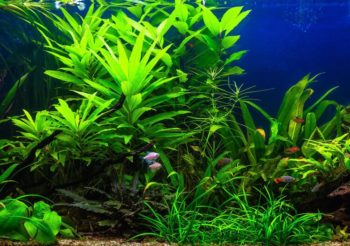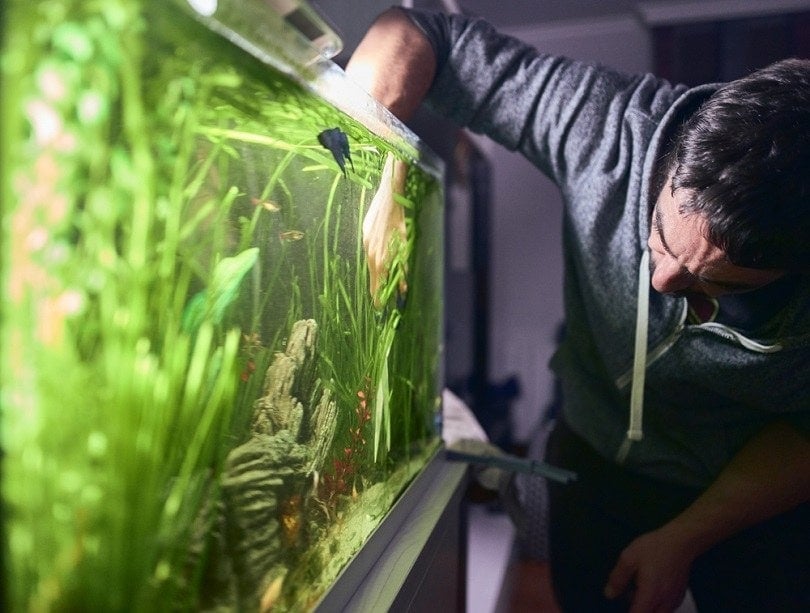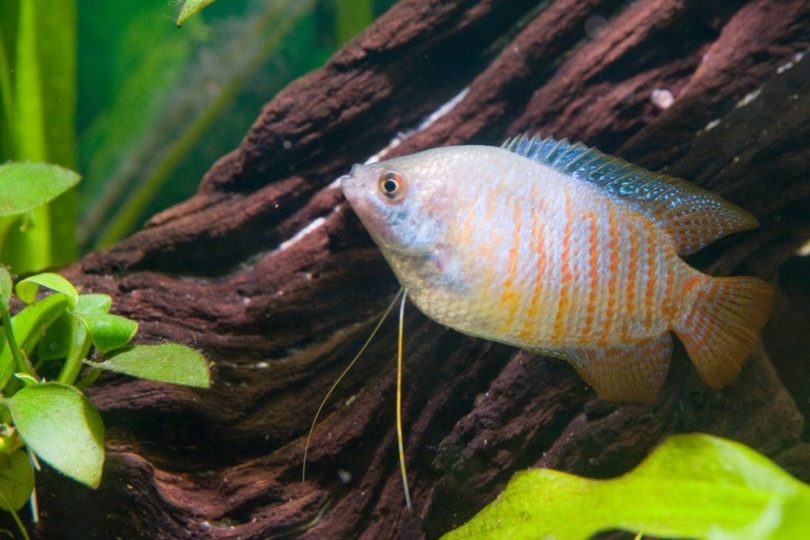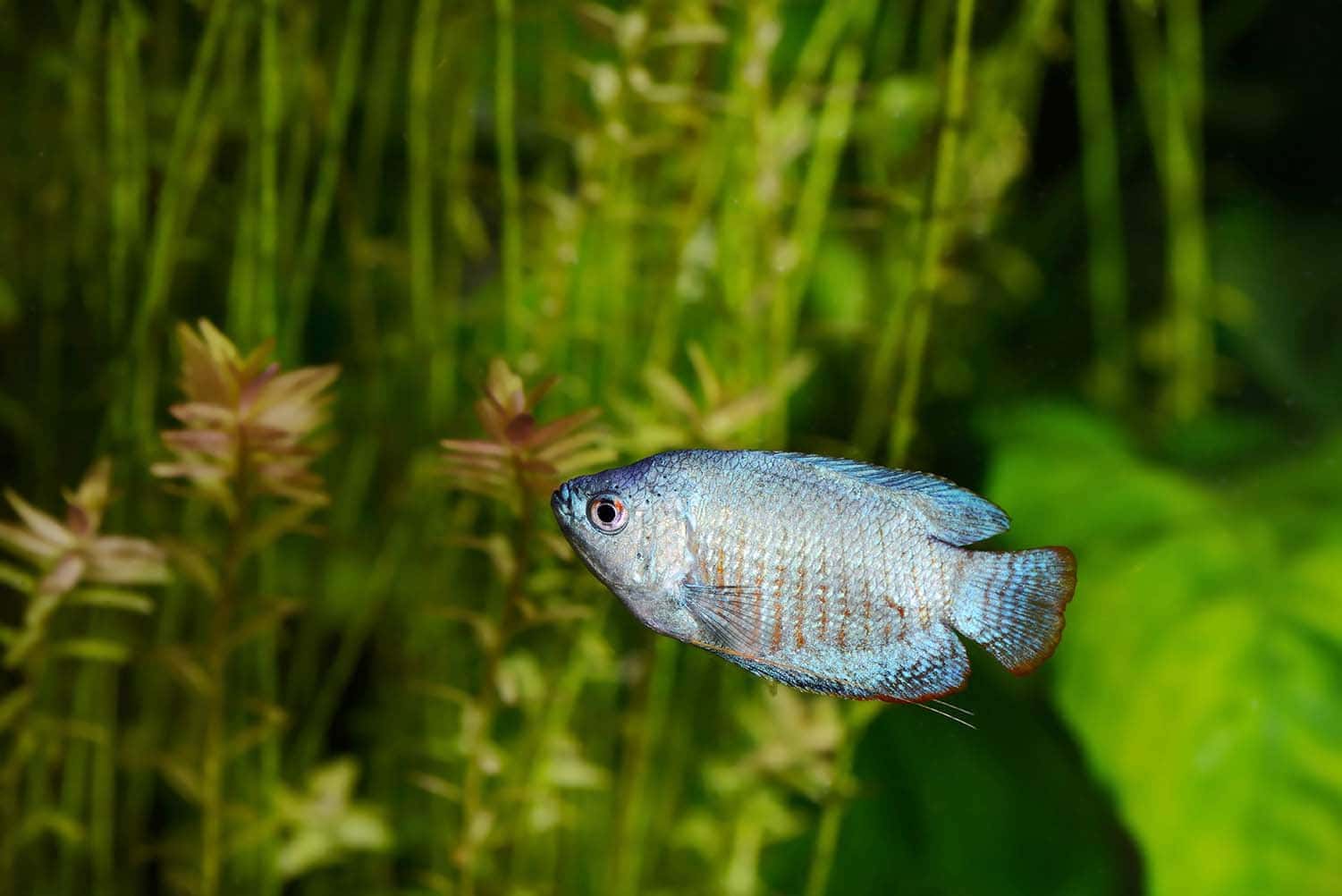Flourite Vs. Eco-Complete Vs. Fluval Stratum Vs. ADA Aquasoil

Updated on

If you want a gorgeous planted tank, you KNOW you need a good nutrient-rich substrate for them to thrive. But which one should you choose?
With several options available, I’ve compared each one during my research on my planted tank.
This should help you find the best fit for you!
A Quick Comparison of Our Favorites
| Rating | Image | Product | Details | |
|---|---|---|---|---|

|
Flourite |
|
Check Price | |

|
Eco-Complete by CaribSea |
|
Check Price | |

|
ADA Aquasoil |
|
Check Price | |

|
Fluval Stratum |
|
Check Price |
The 3 Best Substrates for Planted Tanks in 2024
1. Flourite

Flourite is great if you’re not looking to alter the pH of your aquarium water. It also comes pre-washed, but it’s recommended that you give it a rinse before use, which can be done right in the bag.
Expect some initial cloudiness, which should clear up with the help of a mechanical filter.
- Comes in two styles – gravel & sand
- Flourite sand is heavyweight and holds plants well
- For the Flourite sand, debris sits on top, easy to skim with a siphon
- Looks nice
- May support good anaerobic bacterial activity
- High surface area for bacteria to live
- Never disintegrates
- Won’t discolor water like soil
- Pricey – this stuff is one of the more expensive substrates.
- Not a complete nutrient solution for plants.
- Cloudiness when setup or disturbed can be aggravating if not washed well first
- Won’t supply CO2 to plants (unlike soil)
2. Eco-Complete by CaribSea

Eco-Complete is designed specifically to help with root development in your planted tank, and is scientifically designed to mimic real-world hot spots for underwater plant growth!
This product also avoids the use of artificial dyes, paints, or chemical coatings, while also helping to convert fish waste into plant food.
- It supplies microorganisms to jumpstart the cycle
- It looks nice to many
- You don’t need to wash it
- Has greater CEC for holding nutrients.
- Won’t go hydrogen sulfide crazy on you like dirt, perfect for creating deep banks
- It can be used as a cap for soil
- 4x more surface area than gravel for beneficial bacteria
- Won’t discolor water like soil
- Never disintegrates
- Higher cost, though not quite as high as other premium substrates
- Traps debris like gravel unless capped with sand
- Won’t supply CO2 to plants (unlike soil)
- Not a complete nutrient solution for plants
3. ADA Aquasoil
True plant-fueling commercial substrates are actual soil, baked into granules.
ADA aquasoil is one.
It lowers pH, which can be looked at as a pro or a con, depending on what you’re after.
- Made of mineral rich volcanic soil
- Nourishes plants for a long time
- Easier to manage than raw soil – It is MUCH less messy
- Small grain size ideal for fine rooting plants
- Space between grains helps prevent hydrogen sulfide production
- Higher cost
- Like raw soil, it gasses off lots of ammonia initially
- Because it’s baked, you don’t get the little beneficial microbes in the package
- Somewhat breaks down over time
A more budget-friendly option would be Mr. Aqua Soil, which is very similar to ADA soil (and less rich in ammonia).
4. Fluval Stratum
It tends to really lower the pH if used alone.
It’s ideal for shrimp and tropical soft water fish species, but some fish like goldfish can adjust and do quite well.
You’ll notice it’s also quite lightweight, which can make it not hold the stem plants well on its own.
- Nourishes plants for a long time
- Made of mineral rich volcanic soil
- Clean option
- Small grain size ideal for fine rooting plants
- Holds nutrients well
- Won’t discolor water like soil
- Minimal leaching of ammonia
- Pricey
- Because it’s baked, you don’t get the little beneficial microbes in the package
- Somewhat breaks down over time
- Very lightweight, can be difficult to weigh floating plants down when used alone
- May require additional fertilization
A good combination is Eco-Complete on top with Fluval Stratum on the bottom. The Eco-Complete is heavy enough to help hold rooting plants, while the Stratum nourishes them. You can also do a mix of Eco-Complete, Stratum, gravel, and sand to create mountains/hills/slopes in your aquascape.
Which of These Substrates is Best?
Inert substrates like Flourite sand and Eco-Complete are comprised of volcanic material. Again, they are both inert. Yes, this means they don’t buffer the pH. And they won’t dissolve over time. They may have lots of minerals, but the plants can’t access much of them easily because they are bound up in the particle structures.
So when it comes to feeding plants? Not particularly useful. (In and of itself.)
The marketing is CRAZY on this stuff. They make you think it has all these minerals that will fuel your plants. Look: Glass also has oxygen, but nobody uses it for oxygen because it’s all locked up in the molecular structure.
That said: You could *technically* say glass has oxygen in it.
But there is good news: These substrates may still be worth the price tag.
Volcanic clay-type substrates have a large surface area for bacteria colonization, larger than gravel by far. So they can help cycle the tank faster and support a stronger colony of beneficial bacteria. These high CEC clays can also act like a sponge and trap nutrients you are dosing to the water column, helping retain them around the roots where the plants need them.
BUT—Truth be told… Whatever substrate you use that is not inert will STILL run out of nutrients at some point. Dirt, ADA soil, whatever.
At that point plants will rely on the substrate to conduct nutrients from other sources – such as fish food and water dosing. This is a major advantage of keeping your plants in pots – especially when you have digging fish such as goldfish. When it runs out of juice, simple as washing them out and adding new soil.
How about cleaning? There are mixed thoughts, some try to lightly siphon and others just let the fish waste fertilize the plants. Ultimately, it’s your call. If you keep “messier” fish like goldfish, you will probably want to vacuum to keep the tank’s health in good order.
Takeaway
If you want something to really nourish the plants to help cut back your initial need to dose and fertilize? ADA Aquasoil and Fluval Stratum are great options. They can get your tank off to a great start, and with enough additional nutrients from fish waste and recycled organic matter to even last for several years.
For a high CEC option, Flourite or Eco-complete can be what you need and can be a little more wallet-friendly.
Now it’s your turn:
What’s your experience using these soils?
Do you have a preference?
See also:
Featured Image Credit: Bukhta Yurii, Shutterstock

















